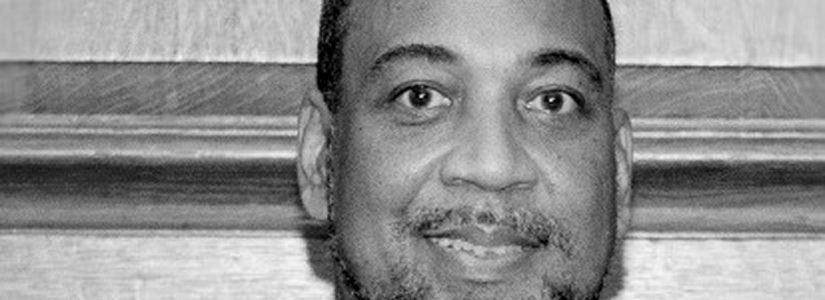
Notes from the Board: John T. Reddick
May 22, 2017 | by John T. Reddick, Board Member
Article from the Spring 2017 Newsletter
I was fortunate to grow up in the 1950s and ’60s in what still remains one of America’s unique and truly integrated communities, an area of Philadelphia known as Mount Airy. The neighborhood supports a rich and varied housing stock, from modest row houses to spacious mansions, which were affordable to people with a broad range of incomes. The area hosts an equally significant number of historic properties that date to the 1700s, among them the Morris, Cliveden, and Upsala Mansions, along with churches, cemeteries, and schools of the era that dot the community’s main thoroughfare. My early public schooling in this richly historic area reflected not only that economic range, but a racial mix as well. I went on to attend one of the city’s vocational high schools before going on to Ohio State University and Yale University to study architecture.
Neither one of my parents had attended college, but my father’s income was enough for my mother to be “just” a housewife, which made her unique among other families of our income level. Both of them were active in the community. My father was a local Republican Committeeman and my mother was very engaged in the area’s block and neighborhood civic associations. In fact, they were both registered as Republicans. They were advised by other young African-American couples moving into the area that this was a way of disguising from city government the evolving African-American presence in the area. I say all this, not to say that the community and times were devoid of racial issues and awareness, but to reflect on the rich opportunities the period and community offered my parents, and through them, me.
As a war veteran my father was entitled to the government’s G.I. Bill which offered all servicemen support toward home ownership and a continued education. This gave my parents and their peers a shot at better work and housing opportunities. Oddly for the time, and despite the fact that my mother and her family had lived for generations in a suburban area outside of Philadelphia, my parents chose to live “in the city” in Mount Airy. As the civil rights period advanced opportunities in the city for African Americans, my mother’s civic efforts would result in an offer to work at a local bank. My father would move on to a position in the city’s court system, two opportunities that provided resources to support sending my sisters and me to college.
Another factor that guided my interest in history, architecture, and urbanism throughout this period were family trips to New York City. We participated in neighborhood-organized theater trips, as well as visits to family friends who lived in Harlem. There’s a famous Langston Hughes quote, “I was in love with Harlem even before I got there,” to which I would have to also include Manhattan as a whole. For me it was Harlem’s place within that cosmopolitan island that contributed to its luster. Fortunately, I got to New York pretty early. In fact, one of my first spatial memories was of the interior of Radio City Music Hall. When, years later, I related the memory of that combined sensation of space and performance to my mother she said, “I can’t believe you remember that. You were about four years old!” I can also recall coming to New York for the World’s Fair in 1964 and passing through the colonnade of the former Pennsylvania Station, then covered in scaffolding and in the midst of demolition. Those memories and their significance were a great reservoir of reference when I later sat in on Vincent Scully’s architectural history lectures at Yale, and they helped to define how my feelings for those particular structures were relevant to how all citizens share place-related memories and histories over generations.
Of course, I would eventually move to New York City, working for Robert Venturi’s office, the Prospect Park Alliance, and later with Betsy Barlow Rogers and the Central Park Conservancy, where I focused on park and streetscape restoration and enhancement. Beyond those experiences I also chose to engage in work with Harlem institutions such as the Abyssinian Development Corporation, the Apollo Theater, and the Studio Museum. I volunteered and benefited from participating in New York City’s cultural and political life, serving on my community board and panels for Arts in Transit, the New York State Council on the Arts, and the Percent for Art Program of the New York City Department of Cultural Affairs. From these I acquired a variety of knowledge and skills that would serve me well.
In my first neighborhood-based civic project I volunteered and chaired the effort to fund and build a memorial to Ralph Ellison in Riverside Park near where he lived on Riverside Drive. Later I worked with Betsy Barlow Rogers to advance the federal application for the enhancement of Frederick Douglass Circle and the Harlem Gateway along 110th Street north of Central Park. That was followed by working with then-Manhattan Borough President C. Virginia Fields to implement the construction of a monument honoring abolitionist Harriet Tubman. In all of these efforts I drew from historic documents and narratives to enliven written proposals, inspire artists and their work, and glean specific quotes that would eventually be engraved on these memorials and monuments.
My past has informed my present. This lifetime of living around historic structures and working within the realms of architecture and memory has led me to the work of the New York Preservation Archive Project, where I have served on the Board of Directors for the past year. The Archive Project shares my belief that the preservation of history serves as a guide for contemporary life, for it serves as a point of reference of both our great achievements and flaws, always serving as a guidepost to help light and inspire our way.